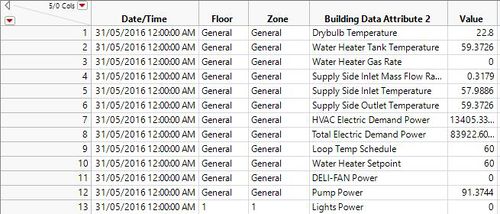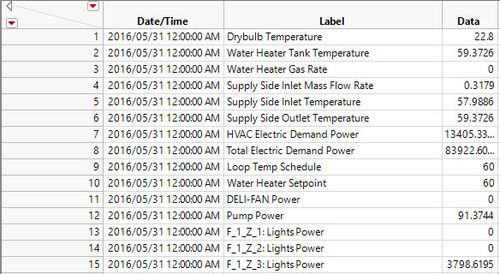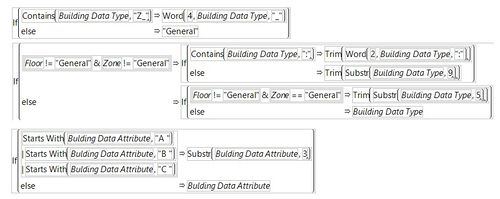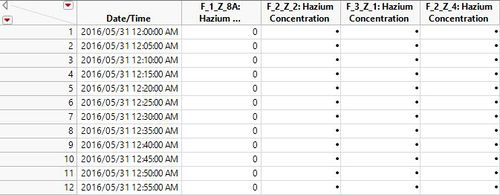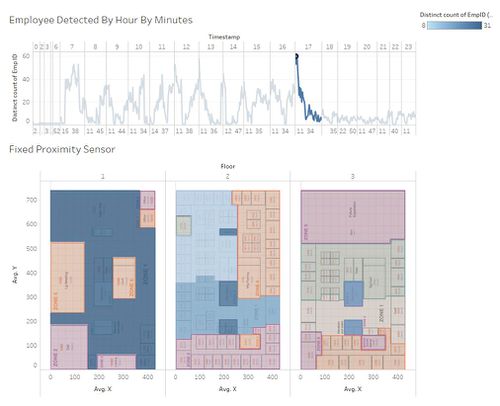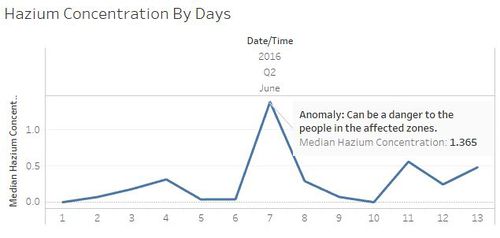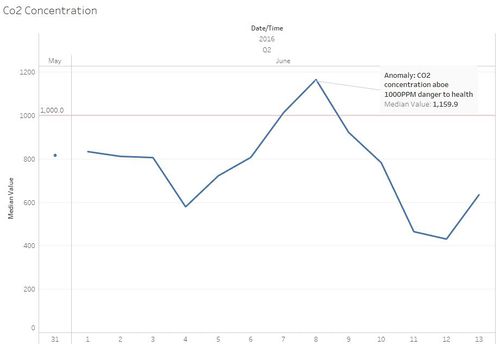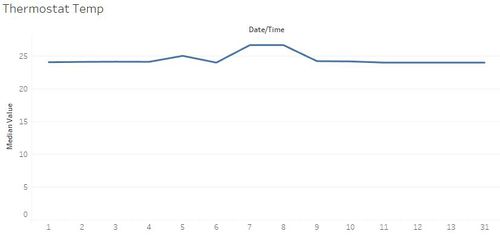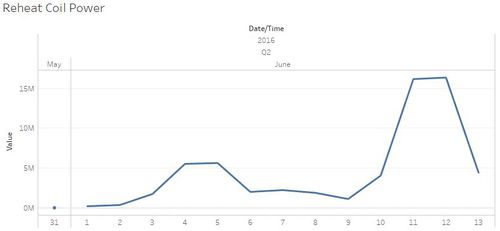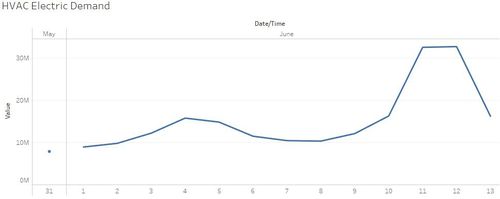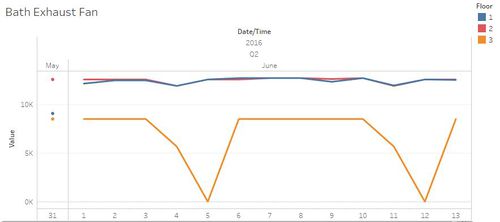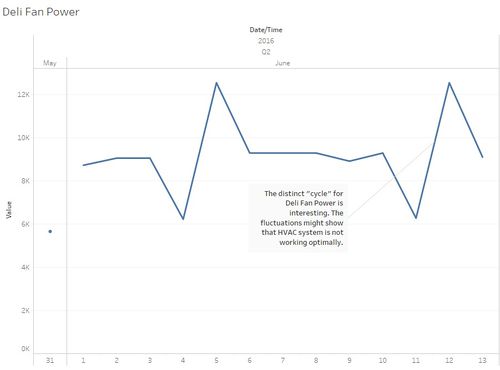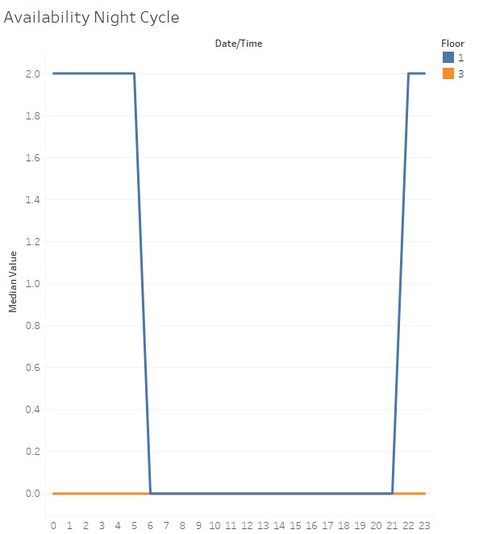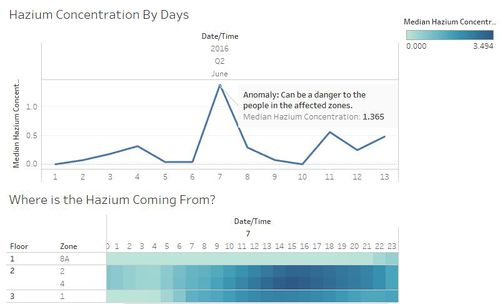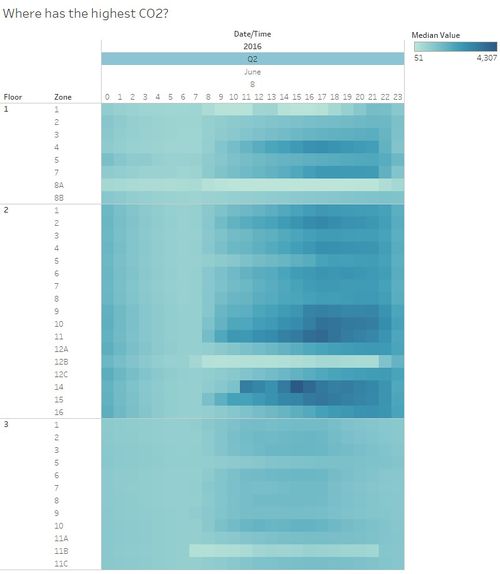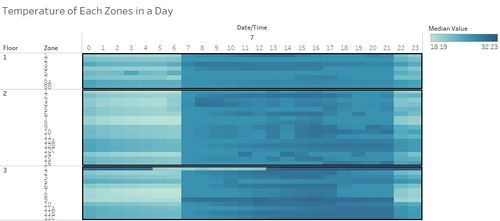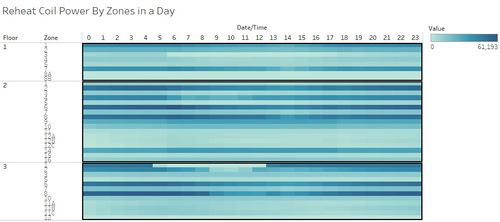IS428 2016-17 Term1 Assign3 Chua Feng Ru
Contents
Problem & Motivation
While the new office is built to the highest energy efficiency standard, the problem is that there are still several HVAC issues to work out. And thus, the motivation is to use visual analytics to find out what are the most probable issues within the new building.
Data Cleaning and Transformation
Building Data
As for the initial building data, the data is structured such that each record or row has multiple columns as the data elements. The first step is to use JMP Pro to structure the data in the format of (Date/Time, Floor, Zone, Building Data Attribute, Value).
The process in transforming the data, is to first use the "Stack" feature of JMP Pro. This will allow me to format the data as below:
However, I realised that certain fields still contain Floor and Zone information. Thus, I used a series of formulas to separate the Floor and Zone information from the label. The following are the formulas which are used to accomplish the data cleaning process.
Hazium Concentration Data
For the Hazium Concentration Data, I realised that there are the files are splitted according to the sensors in each zone or floor. The first thing to do is to join the files together into 1 single table, with JMP Pro's "Concatenate" table function.
After that is done, I will have multiple columns of Hazium readings, I perform similar function of using the "Stack" feature to restructure the data. And formulas is also used to split the get the relevant zones and floor information. And the end product is as of below:
Employee Data
For the employee data, there is a need to generate the proximity id without the numeric number (e.g., Mat Bramar -> mbramar). JMP formula is used to achieve this:
Fixed Proximity Data
For the fixed proximity data, there will be a need to create an Emp ID field, to facilitate linking of employee data and fixed proximity data. JMP is also used to achieve this:
Data Findings and Analysis
Q1: Typical Day for GasTech Employees
- Employee Movements By Fixed Proximity Sensor
Generally, all GasTech employees will report to the office at around 7 AM, and next at around 12 PM they will go for an hour lunch, and finally end work at around 5 PM.
| Department | Behaviour |
|---|---|
| Engineering | They are the ones who work the latest, as they have been detected by the sensors at 11 PM. |
| Administration | The admins are the ones who follow the typical or general pattern, where they report to work at around 7 AM to 8 AM, lunch at around 12 PM and end work at around 5PM. |
| Executive | The executives report for work as the same time as others, however in the morning from 9 AM to 11 AM, they can be seen around the all 3 floors. It seems that they are making their rounds. |
| Facilities | The facilities personnel are the ones, whose job is to travel around the office. This is so as they can be seen around all 3 floors throughout the entire day. And it also seems that a minority of them need to stay overnight to accomplish their work. |
| HR | It seems that the HR personnel follows the typical trend. |
| IT | The IT Department are the most punctual, as by 8 AM they are observed to be in Floor 2 and 3 in the office areas. They are also like the engineer department, where they knock off the latest. |
| Security | The Security Department report to work as the same time as the typical pattern, and their job seems to require them to traverse the 3 floors. It seems strange that they also knock off at 5PM, and there are not Security Personnel after around 5 PM. |
- Employee Movements By Mobile Proximity Sensor
The mobile proximity sensor typically collects data at only 9 AM and 2 PM. It seems that at around this timing, most employees detected are at the office areas in Floor 2 and 3.
Q2: Interesting Pattern in Data
| No. | Interesting Pattern | Possible Significance |
|---|---|---|
| 1 | The spike in hazium concentration can potentially cause harm to the occupants within the zone. | |
| 2 | This can potentially cause danger to the people in the affected area at > 1000PPM. | |
| 3 | This is not considered to be dangerous, however it is interesting to note that out of the entire 2 weeks, the data is highest at this 2 points. And can serve as a basis to find out if the something is not functioning well in the HVAC system to bring down the temperature. | |
| 4 | This can serve as point of investigation regarding the efficiency of the HVAC system, as there seems to be a sudden heating process going on. This may or may not be due to a faulty sensor. | |
| 5 | The sudden spike in HVAC electric demand can also serve as a point of initial investigation as there may be some parts of the HVAC components not working as expected. | |
| 6 | The interesting finding is that the Bath Exhaust Fan power is in constant usage for Floor 1 and 2, while Floor 3 has zero power consumption. This serve as a point to investigate power efficiency of the Bath Exhaust System. | |
| 7 | It is interesting that the pattern showed that there is a distinct cycle in terms of the power usage. It may be interesting to find out what is causing these "cycle". | |
| 8 | It seems that only Floor 1 Night Cycle Manager is working properly, and that the Floor 3 Night Cycle Manager seems not be working at all. |
Q3: Anomalies in Data
| No. | Anomaly | Description | Importance |
|---|---|---|---|
| 1 | The Hazium concentration is harmful to the occupants of relevant areas, and the findings reveal that there is Floor 2 (Zones 2 and 4) is has the highest amount of Hazium concentration from 2PM to 5PM. | High (Health Damaging) | |
| 2 | The findings showed that CO2 concentration is the highest in the afternoon period in Floor 1 and 2, however Floor 3 seems to reflect that there is a low CO2 concentration in general. The CO2 concentration peaked at > 4000 PPM on 8th June, 3PM, at Floor 2 Zone 14, and if this continues, it will cause health damage to GasTech employees. | High (Health Damaging) | |
| 3 | While the temperature is higher from 7am to 9 pm, it is interesting to note that Floor 3 Zone 1 has a high temperature of more than 30 degrees celsius for the entire day, except for 5AM to 1PM | High (Serious issue for building operations, as HVAC not working well in some areas). | |
| 4 | It is interesting to note that while temperature is generally higher from 7am to 9pm for most areas, the Reheat Coil Power in some zones in Floor 2 is still very much using a significant amount of power. This might be the cause of high temperature in previous finding. If this continues, some zones or areas may face hot temperatures. | High (Serious issue for building operations, as HVAC not working well in some areas). | |
| 5 | The bath exhaust fan power has been almost constant for both 5th June and 12th June. This anomaly is specific to these 2 days only. And, this may show that the bathe exhaust Fan has been consuming unnecessary energy. And furthermore, comparing the bath exhaust fan power for all the floors, it seems that floor 3 exhaust fan power is working optimally as compared to those in floor 1 and 2. | Low (Just shows that ventilation system is not working efficiently). |
Q4: Casual Relationship
- All Personnel Avoids Office 3000
While the findings show that Floor 3 Zone 1 recorded the highest temperature across all the floors and zones, it seems that people avoid going in to that specific zone or room at that timing as there are no one going in to that area since 3 PM. The evidence is strong as the same behavior (no one entering Floor 3 Zone 1) is consistent across the data sets.
Data Visualisation
Uploaded to E-learn, as Tableau Online Expired.
Tools Used
- Tableau 10
- JMP Pro
- Microsoft Excel
Reference
